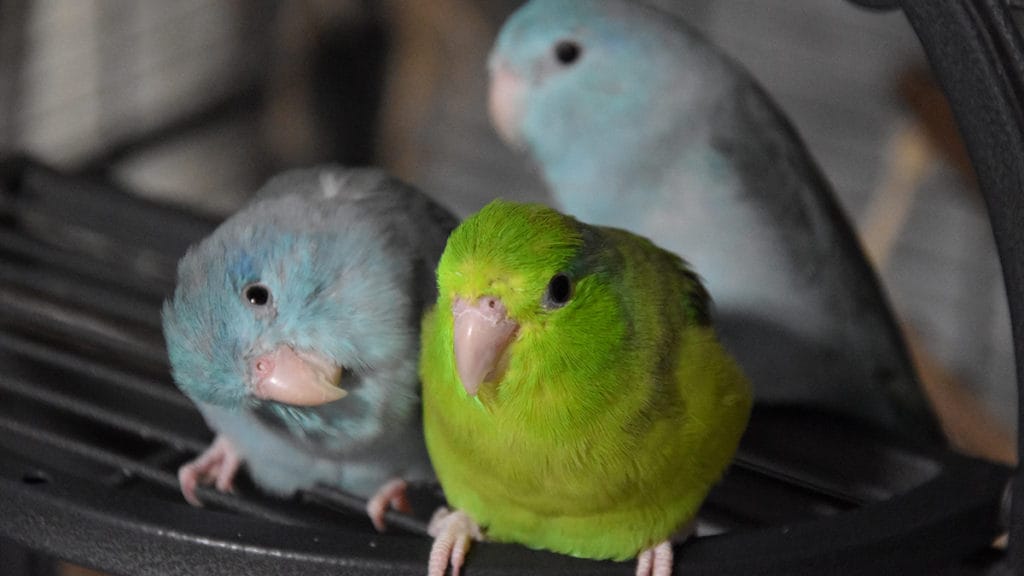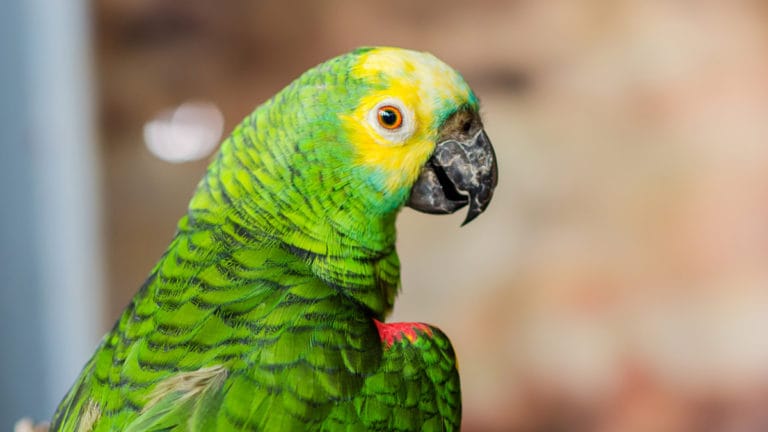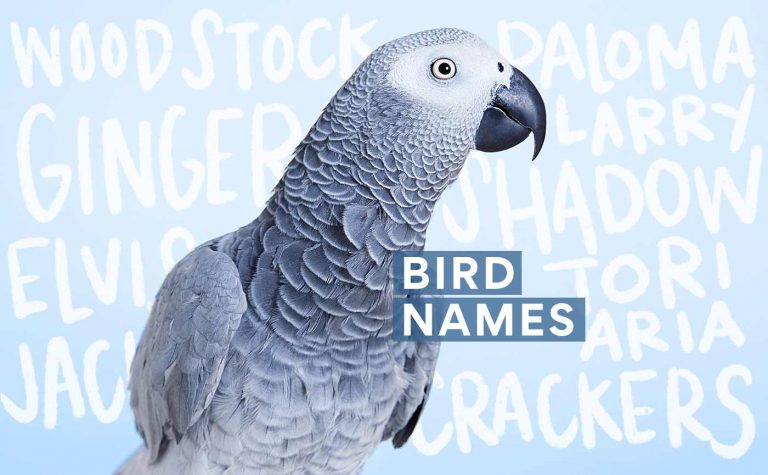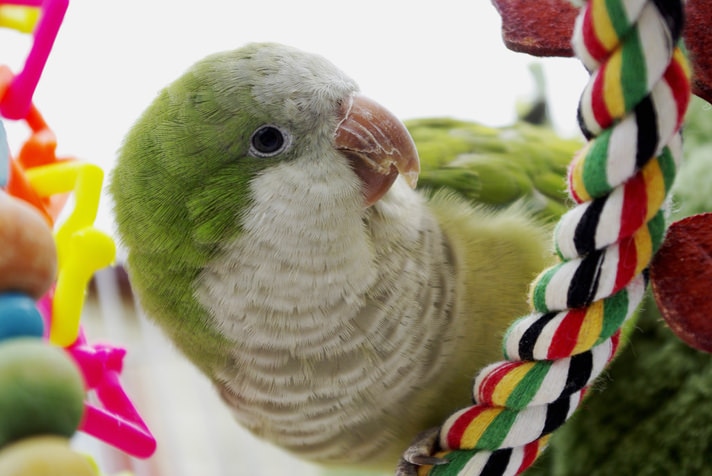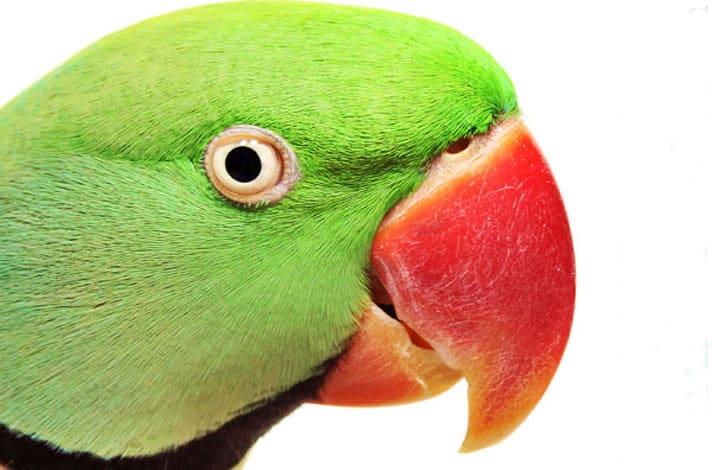Parrotlets have been described as tiny Amazon parrots: fearless, independent and adventurous! These little guys, known as pocket parrots (and not just for their fondness of pockets), delight owners with their rambunctious nature. Owners have called them “little spitfires” but praise their affectionate side. While ranging between 3 inches and 5 inches, these little birds pack all the punch of a big bird and they’re not afraid to let you know it!
Do you have questions about parrotlets? Check out our top 8 questions, and answers:
1. What is a parrotlet?
Parrotlets are parrots in the genus Forpus. There are seven species of parrotlets, but the most common pet parrotlets are the Pacific parrotlet, the green-rumped parrotlets and the spectacled parrotlets. When you are looking for parrotlets, the one you would most likely find is the Pacific parrotlet.
Parrotlets have a few different color mutations; according to the International Parrotlet Society, these are the recognized mutations: albino, blue, cinnamon, cinnamon, dilute, dilute-blue, fallow, fallow-blue, fallow-yellow, gray-green, lutino, pastel, pastel-blue, pied and turquoise.
2. How do you tell a male parrotlet from a female?
In Pacific parrotlets, confirming the bird’s gender is easy. Males have blue feathering across their eyes, under their wings and on their lower back. For the color-mutation parrotlets – minus the albino mutation – the males retain some form of gender identification mark, such as markings around the eyes.
3. What types of toys do parrotlets like?
Parrotlets like variety when it comes to bird toys. Parrotlet-sized toys are a must, but they will also happily play with medium- to large-sized toys. Kabobs, soft woods and shreddable toys are a must, but mix it up with foot toys, bells, boings and swings. If you offer them a larger toy, check for any areas where a parrotlet? toe could get caught.
4. What are common parrotlet health problems?
There are no specific medical concerns surrounding parrotlets, though years ago, they were diagnosed with what was called “egabacteria.” The bacteria was actually a yeast, and it was renamed “avian gastric yeast.” Other than that, there are no common parrotlet health problems. Take your parrotlet to an avian veterinarian annually, or if you detect any sign of illness.
5. What’s a good food portion size to offer my parrotlet?
Being such little birds, they can eat a lot! Depending on the parrotlet, the individual bird might prefer small bits of chopped fruits and vegetables, over a large piece of one. But some parrotlets might like a large piece of broccoli that they can nibble on, but also enjoy a very tiny piece they can hold in their foot.
6. What bar spacing/cage size should I get for a parrotlet?
A good cage size is 24 by 18 by 18 inches, but the bigger the better, with the cage bar spacing around 1/4 to 1/2 inch.
7. Do parrotlets talk?
Parrotlets can talk! Like most parrots, males are known for being more proficient at talking than females, but, with time and patience, you might hear your bird repeat a word or phrase!
8. How do I bond with such a parrotlet?
Always remember that your hand is lot bigger than a parrotlet! If you try to grab this tiny bird, it might view it as a gaping mouth swooping in for some breakfast! Start slowly to create a trusting relationship with your pet bird.
Posted by: Chewy Editorial
Featured Image: Via Shutterstock/Andrej Jakubik
Share:
